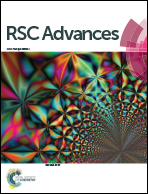Anti-diabetic activity of red pitaya (Hylocereus polyrhizus) fruit
Abstract
This study investigated the anti-insulin resistant activity of red pitaya (Hylocereus polyrhizus) fruit. Fresh pitaya along with two heat-processed pitaya samples with different proportions of phenolic contents, scavenging activities, and soluble dietary fibers were tested in insulin resistant rats over 6 weeks of treatment in a cause-effect study to investigate the anti-insulin resistant components of red pitaya. The results showed that fresh pitaya significantly (p < 0.05) attenuated the insulin resistance, hypertriglyceridemia and atherosclerotic changes induced by fructose supplement in rats. Thermally-treated pitaya at 95 °C for 30 min (containing a low antioxidant content) significantly (p < 0.05) improved hyperinsulinemia. Thermally-treated pitaya at 105 °C for 60 min (containing a low antioxidant and soluble dietary fiber content) fed to rats had no significant effect on insulin resistance, dyslipidemia and atherogenesis. Based on this study, the anti-insulin resistant effect of red pitaya can be attributed to its antioxidant and soluble dietary fiber contents.


 Please wait while we load your content...
Please wait while we load your content...